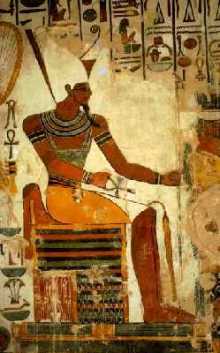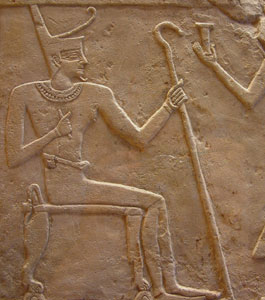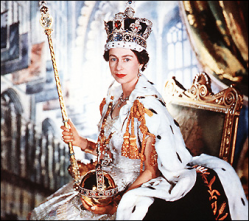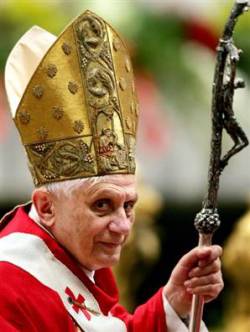The Egyptian God Adam
Posted: January 24, 2012 Filed under: history, philosophy, religion | Tags: adam, adam-god, asenath, atum, brigham young, egypt, egyptian, god, gods, heliopolis, joseph of egypt, joseph smith, king follett discourse, lds, mormon, on Leave a commentToday I stumbled upon an Egyptian god I’d never heard of before, and yet he seems quite familiar. This god is named Atum. According to Egyptian legend he is the creator, “the deities and all things being made of his flesh.” He is the father of Shu and Tefnut. Atum phonetically sounds a lot like Adam. Could Shu refer to Seth? The Wikipedia article on Atum states, “Atum’s cult centred on the city of Heliopolis.” This is quite fascinating since Joseph of Egypt’s wife Asenath was “the daughter of Potipherah priest of On” (Genesis 41:45). On is another name for the city of Heliopolis. If this Atum is Adam, then maybe Joseph’s wife was also a Hebrew and believed in the same god that Joseph did.
| “Atum is one of the most important and frequently mentioned deities from earliest times, as evidenced by his prominence in the Pyramid Texts, where he is portrayed as both a creator and father to the king. He is usually depicted as a man wearing either the royal head-cloth or the dual white and red crown of Upper Egypt, and Lower Egypt, reinforcing his connection with kingship.” |  |
Apparently Atum is a more noteworthy god than our culture gives him credit for. What I find even more interesting is that Atum wears both a red and white crown. I think this symbolism has a more profound meaning than the author of the Wikipedia article leads us to believe. If red represents the flesh and white represents the spirit, then this crown would suggest that the God Atum is a resurrected being, his flesh having been quickened by the spirit. Why would the Egyptians believe that Adam is the creator of mankind and that he also is a resurrected god? Was Brigham Young a reincarnated Egyptian priest? Ok, ok, I’m being a bit facetious, but you get my point. Somehow early Mormon teachings about Adam being God match up with the beliefs of the ancient Egyptian religion.
The Egyptian Sceptre
Posted: January 21, 2012 Filed under: culture, education, philosophy, religion | Tags: aaron, abraham, antiquity, egypt, hebrew, lds, mormon, moses, pharoah, priesthood, rod, scepter, sceptre, staff 2 CommentsThis excerpt can be found on the Sceptre Wikipedia page under the “Antiquity” section:
| “The was and other types of staffs were a sign of authority in Ancient Egypt, for which reason they are often described as “sceptres” even if they are full-length staffs. … The staff with the longest history seems to be the heqa-sceptre, sometimes described as the shepherd’s crook.” |  |
Doesn’t it seem strange that a largely agricultural culture like Egypt would use a shepherd’s staff as a symbol of power and authority? Might it be that the pastoral Hebrews assumed control of Egypt at some point in their early history and this is where the Egyptian culture adopted this symbol of power? Recall the rod of Aaron and the duel between him and the pharaoh of his day.
One other symbol that is prominent in Egyptian imagery is the crown. The following can be found under the section titled “Crowns and headdresses” on the Pharoah Wikipedia page:
“The red crown of Lower Egypt – the Deshret crown – dates back to pre-dynastic times. A red crown has been found on a pottery shard from Naqada, and later king Narmer is shown wearing the red crown on both the Narmer macehead and the Narmer palette. Alternatively, the red crown is meant to symbolize the womb, placenta.
The white crown of Upper Egypt – the Hedjet crown – is shown on the Qustul incense burner which dates to the pre-dynastic period. Later, King Scorpion was depicted wearing the white crown, as was Narmer. Alternatively, the white crown depicts a gland in the human body, the thymus.”
The symbology here is quite rich. The red placenta symbolizes mortal birth while the white thymus symbolizes spiritual birth. This matches in nicely with the theory that the Tree of Good and Evil represents the physical realm and the Tree of Life the spiritual realm. The fact that the same Pharaoh can wear the different crowns implies that he can move from the physical realm into the spiritual (and vice versa). This is yet another evidence for the influence of Hebrew culture on ancient Egyptian culture. This brings up the question, which Hebrew leader caused the Egyptians to adopt Hebrew symbolism? Was it Moses or Aaron? Or was it Abraham? Maybe Noah?
Quite remarkably the symbolism of the crown and the sceptre have been carried down to our day and age.
 |
 |
| Queen Elizabeth II wearing the crown and holding the sceptre. | Pope Benedict XVI with his crown and sceptre. |
Are the Catholics borrowing symbology from Egypt or do both the Catholics and Egyptians trace their symbology back to the Hebrews?